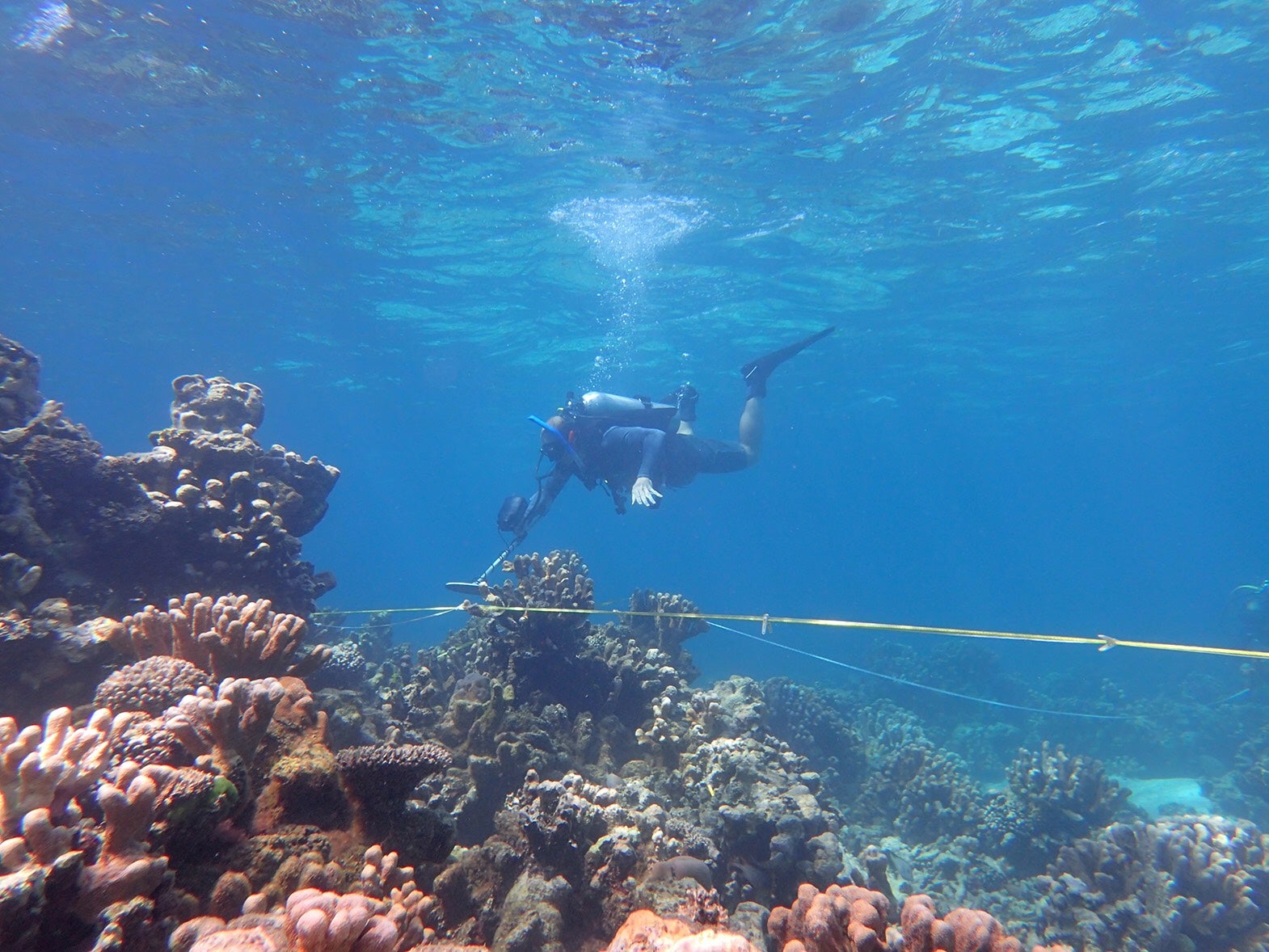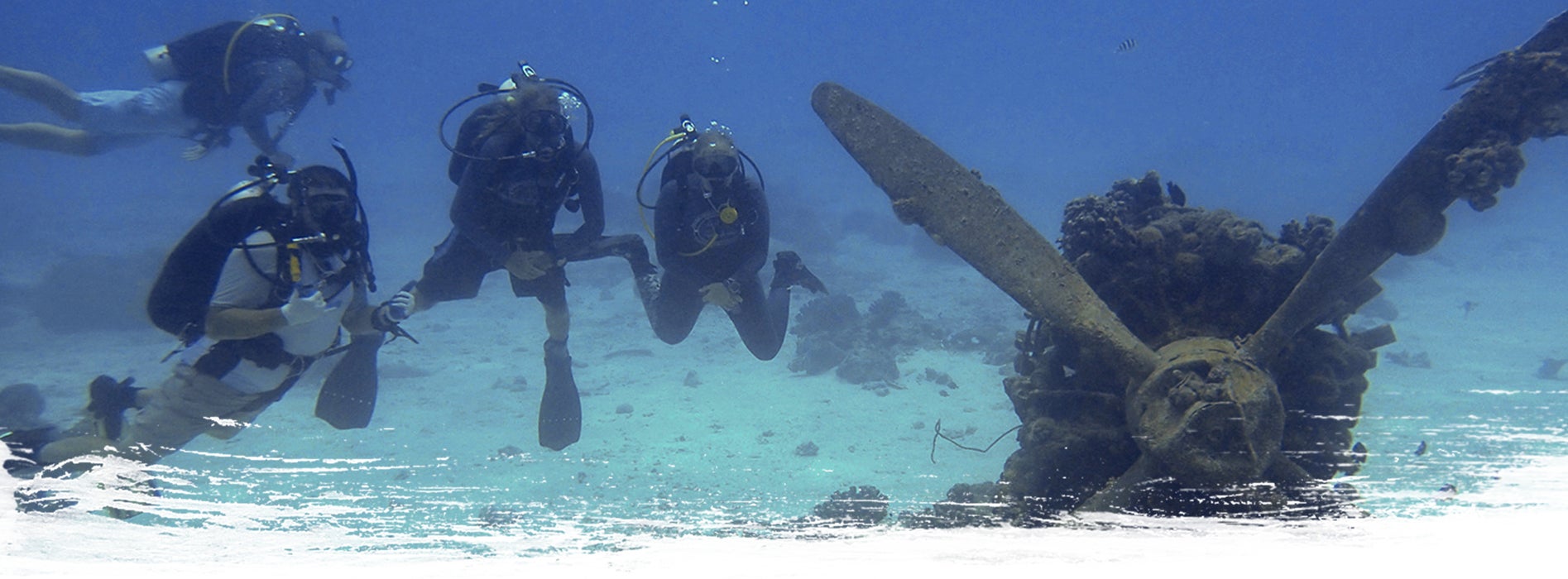A HUMBLING TASK
Graduate students' work in Saipan could help with recovery of servicemen MIA after WWII
In the early morning hours of May 17, our team of archaeologists, dive safety officers and maritime graduate students gathered at Eller House on the edge of East Carolina University’s main campus. Our gear was checked and loaded and we departed for Oceana Naval Air Station in Virginia Beach, Virginia, just as the sun began to break over the horizon announcing a new day. Although a three-hour drive, this would be the first leg of a multiday journey that would take us, quite literally, to the far side of the world ending on the now little-known island of Saipan. Located approximately 1,500 miles south of Japan, Saipan is part of the Marianas Island chain.
In mid-1944, Saipan was the site of one of the most crucial battles of World War II. Its recapture from the Japanese, along with the islands of Guam and Tinian (also in the Marianas), placed Japan within range of newly developed B-29 Superfortress bombers, allowing for strategic bombing of the war industry on the Japanese mainland. Both sides understood the island’s strategic importance and fought bitterly for control of it. The ensuing battle, waged from June 15 to July 9, 1944, resulted in the deaths of approximately 30,000 Japanese and 3,255 Americans. Many of those American servicemen are still unaccounted for and labeled as missing in action (MIA), but they are by no means forgotten. It is that memory that is fueling ECU’s maritime studies summer field school.

ECU’s maritime studies program is conducting side scan sonar surveys and using underwater metal detection during their field school. (Contributed photo)
As a maritime studies graduate student with aspirations of becoming a conflict archaeologist, this project is particularly exciting for me. Military history and battlefield archaeology have always been a deep passion, and the chance to do a project of this nature is truly once in a lifetime. Further, I have relatives who fought in the Pacific theater and I feel that this brings me much closer to understanding their experiences.
Partnered with the Defense POW/MIA Accounting Agency (DPAA), which is assisting us in our travel arrangements and numerous other logistics of the project, ECU graduate students guided by our mentors will conduct archaeological surveys of the waters surrounding Saipan in order to locate, record and document sites related to the battle. Hopefully, this will lead to identifying possible sites containing the remains of missing servicemen. Our entire team is humbled and proud to be able to undertake this task that will not only reinforce the archaeological knowledge of this Pacific battlefield, but could also result in the return home of a soldier, sailor or Marine whose family hasn’t received closure after 74 years.
With the weight and pride of this task in our minds, we rolled into Oceana Naval Air Station primed and ready to begin our long journey, only to be told that we must undertake the most difficult of tasks: wait. Our aircraft was down for maintenance and would be unavailable for some time. Murphy’s Law is not the exception but the rule on field projects, and a contingency plan should always be ready. Instead of wasting time on social media or staring at the walls, our team made the short journey to a local museum where, as luck would have it, not only was there an air show of vintage airplanes occurring, but several World War II-era military aircraft were housed there. World War II buffs like me were giddy from being able to study the aircraft and components in person. As an added bonus, some of us were lucky enough to observe an engine test run of a B-25 Mitchell bomber, a rare treat that most can’t claim to have had.
The next leg of our journey finally began on May 19 with our departure for the West Coast before continuing on into the vast blue Pacific Ocean. There will surely be other surprises, but that is part of the adventure!
-by Jack “Gus” Adamson, graduate student
